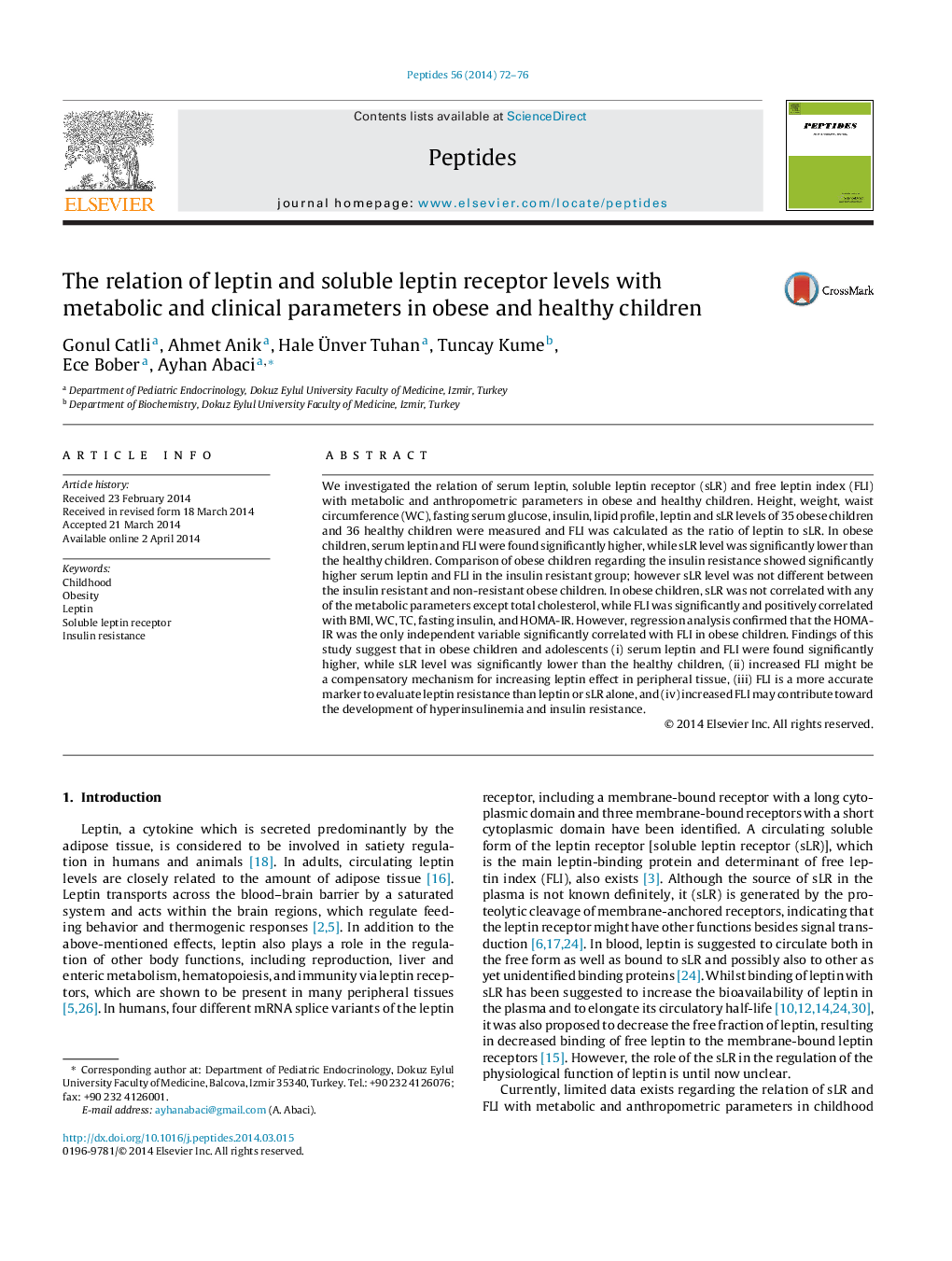| Article ID | Journal | Published Year | Pages | File Type |
|---|---|---|---|---|
| 2006064 | Peptides | 2014 | 5 Pages |
•In obese children sLR is lower; leptin and FLI are higher than healthy children.•Insulin resistance is associated with higher serum leptin level and FLI.•FLI is positively correlated with BMI, WC, TC, fasting insulin, and HOMA-IR.•Increased FLI is a compensatory mechanism for increasing peripheral leptin effect.•Increased FLI may contribute toward the development of hyperinsulinemia and insulin resistance.
We investigated the relation of serum leptin, soluble leptin receptor (sLR) and free leptin index (FLI) with metabolic and anthropometric parameters in obese and healthy children. Height, weight, waist circumference (WC), fasting serum glucose, insulin, lipid profile, leptin and sLR levels of 35 obese children and 36 healthy children were measured and FLI was calculated as the ratio of leptin to sLR. In obese children, serum leptin and FLI were found significantly higher, while sLR level was significantly lower than the healthy children. Comparison of obese children regarding the insulin resistance showed significantly higher serum leptin and FLI in the insulin resistant group; however sLR level was not different between the insulin resistant and non-resistant obese children. In obese children, sLR was not correlated with any of the metabolic parameters except total cholesterol, while FLI was significantly and positively correlated with BMI, WC, TC, fasting insulin, and HOMA-IR. However, regression analysis confirmed that the HOMA-IR was the only independent variable significantly correlated with FLI in obese children. Findings of this study suggest that in obese children and adolescents (i) serum leptin and FLI were found significantly higher, while sLR level was significantly lower than the healthy children, (ii) increased FLI might be a compensatory mechanism for increasing leptin effect in peripheral tissue, (iii) FLI is a more accurate marker to evaluate leptin resistance than leptin or sLR alone, and (iv) increased FLI may contribute toward the development of hyperinsulinemia and insulin resistance.
